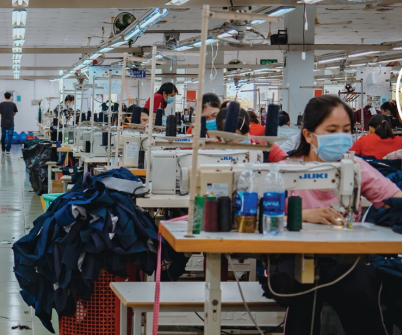Climate change and work: when it's the heat that kills in the factory
May 1 in many Asian countries coincides with temperatures of over 40 degrees Celsius. Increasingly frequent conditions that - as a study by the Global Labor Institute on textile companies in Bangladesh, Cambodia, Pakistan and Vietnam explains - risk compromising workers' health and productivity without adequate mitigation measures.
Milan (AsiaNews) - For days now, South Asia and Southeast Asia have been facing an exceptional heat wave, which in several countries has caused the mercury to rise above 40 degrees Celsius, with peaks of up to 45.
From Bangladesh to Thailand, passing through vast regions of India, Myanmar, Cambodia and the Philippines, there have been casualties due to the high temperatures. Governments have run for cover by decreeing the closure of schools. But there is also another aspect on which it becomes particularly significant to dwell on this day of 1 May: the effect that increasingly prohibitive weather conditions have on the world of work.
It was precisely to the incidence of this problem in the countries now affected by the exceptional heat wave that the Global Labor Institute, the research institute of the American University of Cornell that analyses working conditions in the supply chains of global markets, devoted an interesting study a few months ago. Entitled 'A Higher Level? The Climate Crisis, the World of Fashion and its Effects on Workers', the survey deals with the impact of two phenomena such as rising temperatures and increasingly frequent flooding on the lives of workers in the textile and footwear industries in Bangladesh, Cambodia, Pakistan and Vietnam, four countries that alone account for 18% of world production in these sectors.
They come to an extremely alarming conclusion: without adequate mitigation measures, not only will the health of local workers become more and more at risk every day, but also the very productivity of the companies is destined to collapse, with the real risk of a 'cut and run' approach that would entail very high social costs. According to analysts' calculations, more than 958,000 jobs could already be lost by 2030 in these four Asian countries, with economic damage amounting to USD 65 billion.
The study is based on the WBGT (Wet Bulb Globe Temperature) index, which measures the combination of heat and humidity in a given environment. According to experts, if this index exceeds 30, workers are subjected to severe physical stress.
Cross-referencing the data with the evolution of the climate in Asia, it turns out that a city like Karachi in 2030 could record as many as 190 days out of 365 exceeding this value. But even in Dhaka it would become 65, rising to as many as 105 in 2050. And not very different conditions would also be recorded in Chittagong, Ho Chi Minh City and Phnom Penh.
According to the World Labour Organisation, one should never work inside a factory in temperatures above 32 degrees Celsius. But in one out of five cases, its inspectors in Cambodia found workers working in environments with temperatures above 35 degrees Celsius.
Hence the importance of adopting effective air conditioning and air exchange systems in the working environment, which are also investments for companies: it is estimated, in fact, that too much heat can decrease productivity by up to 15%.
The same applies to flood risk prevention: in Bangladesh, for example, 32% of textile factories exporting all over the world are located in areas where a rise of half a metre in the water level is enough to interrupt work for several days. Even in Vietnam, 31% of the factories are exposed to this kind of risk.
In addition to investments in facilities, however, the Global Labor Institute report also calls for legislative measures to protect individual workers from the consequences of climate change. Because lost working hours due to being unable to get to the factory because of a flood or ill-health caused by a heat wave, nowadays in at least three of the countries in question inexorably mean personal financial loss, with a dry loss of wages.
A survey conducted in Dhaka reports a 10 per cent loss of income during the most difficult weather periods. In the interviews, workers speak specifically of 'bypassing' the months of May, June and July, when temperatures and humidity rise.
While in Karachi, ambulance workers recounted that more than half of the people who died in the 2018 heat wave were workers from the city's poorest neighbourhoods. A few more guarantees exist in Vietnam, where the law does indeed offer some protection in this regard; although what is written on the paper does not always translate into reality.
Ultimately,' concludes the study sponsored by Cornell University, 'awareness of the problem on the part of all those involved in production remains essential. Including the big fashion brands that so far - even in the codes of conduct drawn up against labour exploitation in the factories of their suppliers - have largely ignored the issue.







.png)










